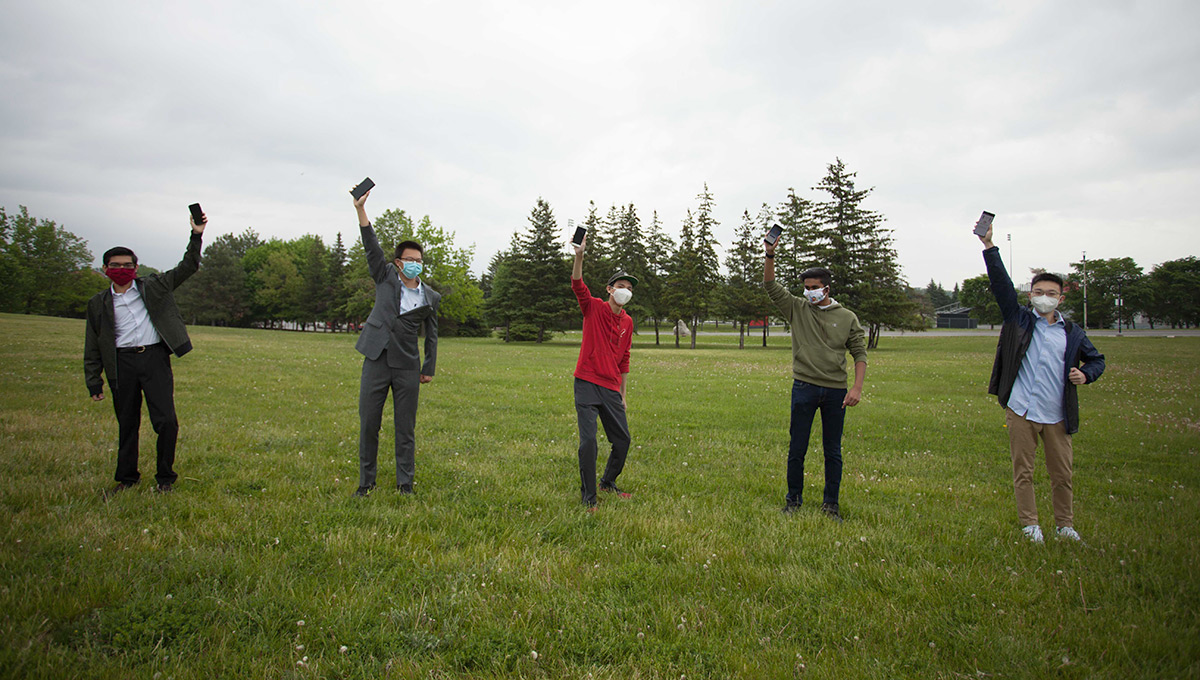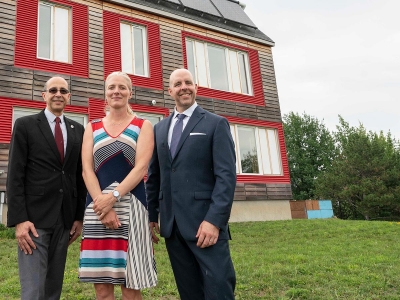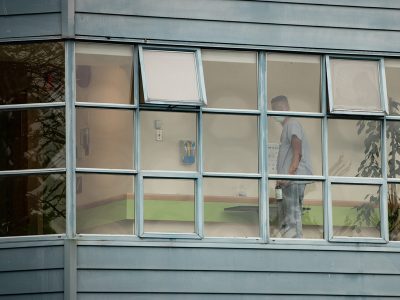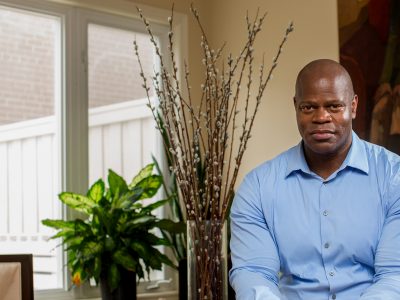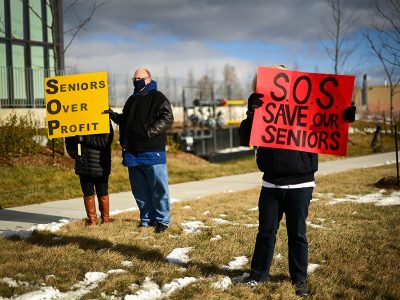By Tyrone Burke
Photos by Fangliang Xu
Wei Shi, an associate professor in Carleton’s School of Information Technology, has developed an app that informs users if they could have been exposed to known COVID-19 cases – without ever collecting their personal information.
“It’s like contact tracing, but without data collection,” says Shi.
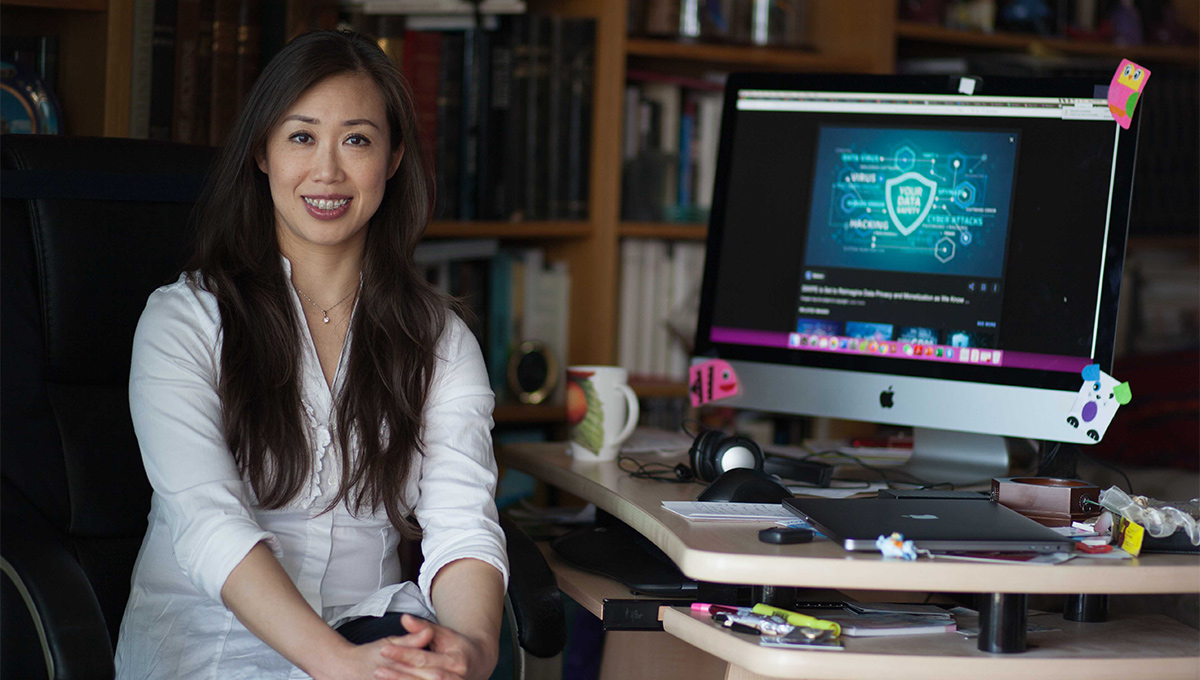
Prof. Wei Shi
The app transmits an encrypted message that is received by nearby phones. The only information included in this message is the date and time. There is no GPS or location data, and no information about a person’s identity or phone number. This message is transmitted directly between cellular phones using their built-in Bluetooth technology.
“Many of the contact-tracing systems used in other countries collect your whereabouts and analyze this data at a central server to determine who could have been infected,” says Shi.
“But you don’t need to do that. If everyone uses a cell phone with a Bluetooth, we can establish contact between phones without recording their geolocations. Only the other’s App ID, data and time need to be saved locally on your own phone.”
This is possible because Bluetooth uses short range radio waves – better known as UHF – to transmit data directly between devices. The technology only works over a short distance. The type of Bluetooth that is installed in cell phones has a range of roughly 10 metres. Even industrial-strength Bluetooth devices are only able to transmit data over a distance of about 100 metres.
Whenever an app user tests positive for COVID-19, Shi’s app confirms that the test is legitimate, and delivers a set of encrypted messages to all of its users through the internet. Each message can be decrypted only by the phones of those who had encountered this infected person’s phone 14 days before and after the test date.
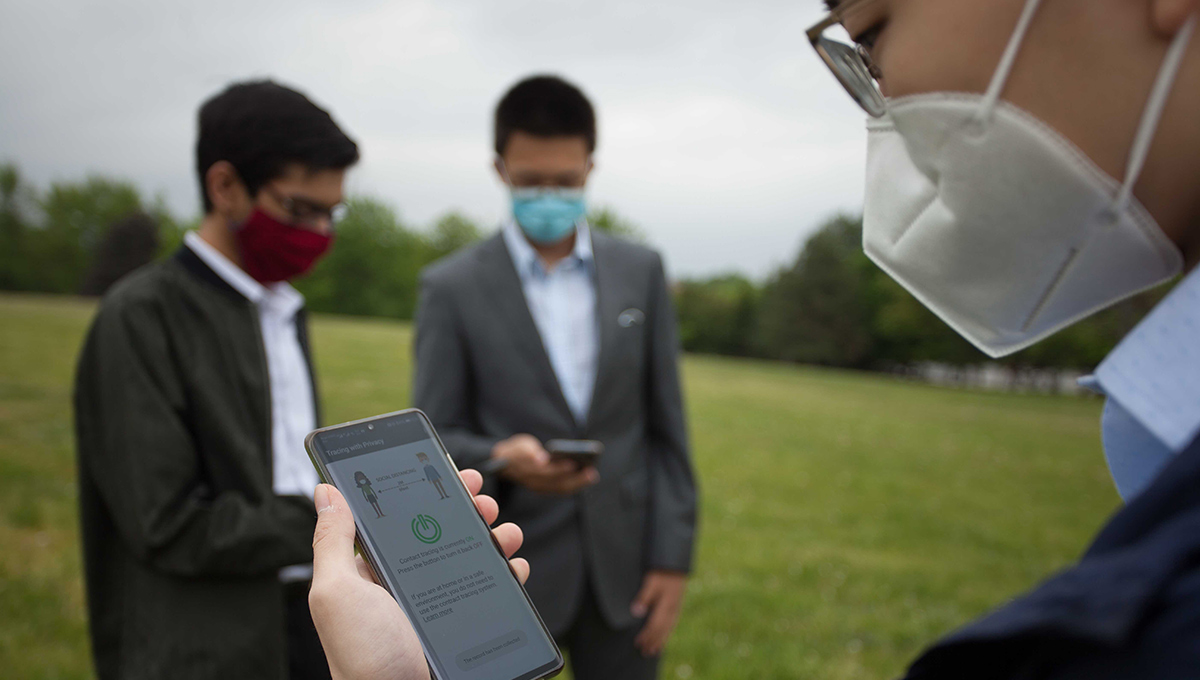
Identity of Infected Person Never Shared
People who have been within Bluetooth range of that person will receive an alert that they have been exposed and when the exposure occurred. People who have not been near that person will not receive a message. The identity of the infected person is never shared – only the date and time that contact with them occurred.
Shi believes that having a central authority to authenticate positive tests is necessary.
“Without this, anyone could report that they have COVID-19,” Shi says.
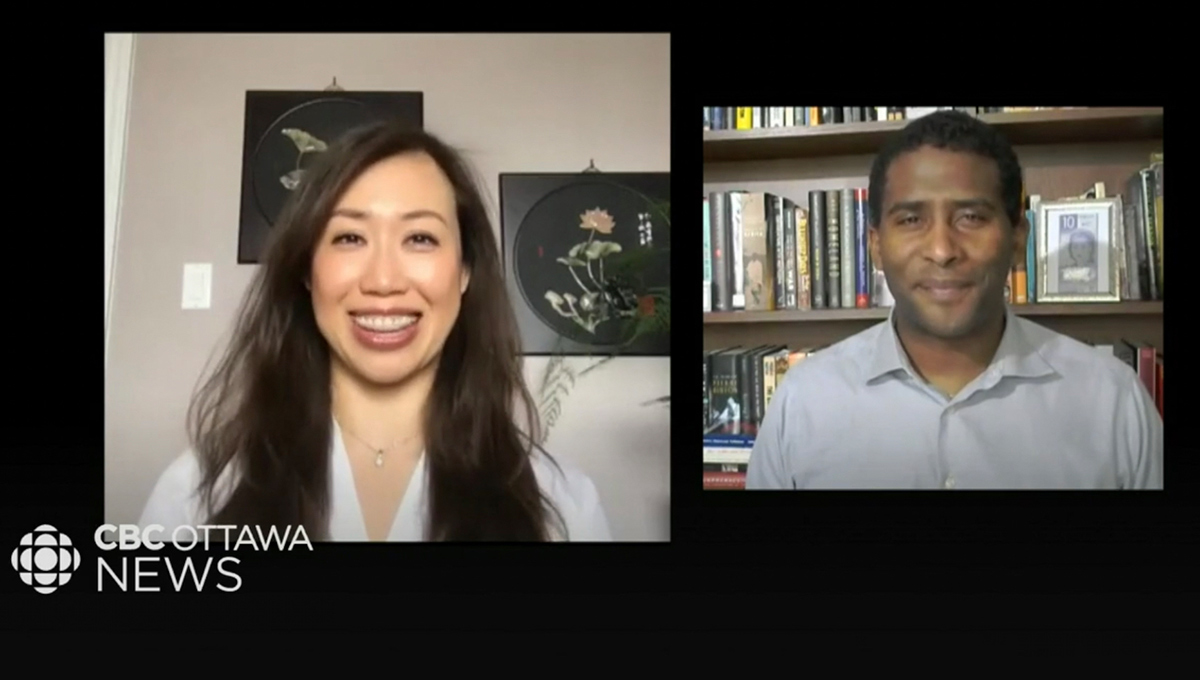
Prof. Shi on CBC News: Ottawa
“If someone had malicious intent, an app without any central control could be exploited in an attack that causes chaos. A person could carry their phone all around the city, then report that they have COVID-19. Then, everyone would get a notification that they could have been infected, and everyone will be in quarantine. That doesn’t help to reopen our economy. We need to have a central control to certify confirmed cases.”
But ensuring privacy is critical. Many people already have apps on their phones that collect location data – Facebook, Gmail, and Instagram all do this – but some are wary of a contact tracing app that has this functionality. Contact tracing apps will need to address this concern, because to be effective, they need to be adopted widely.
“If 60 per cent of people use a contact tracing app, there is a 60 per cent chance of being notified when you have been in contact with an infected person. For the 40 per cent of people who don’t use the app, you would not know whether they are infected or not. The higher the number of users, the better,” says Shi.
To increase the app’s reach, Shi is working to identify low-cost, Bluetooth-enabled sensors that could make the app usable for people who do not have a cell phone. Children, elders and homeless people could carry these sensors, and would receive a notification if they have come into contact with an infected person.
“A design must come at the problem from this angle, and cover the entire population. That’s why we have made this app very simple to use. We have removed any additional information, so people can be worry free.”
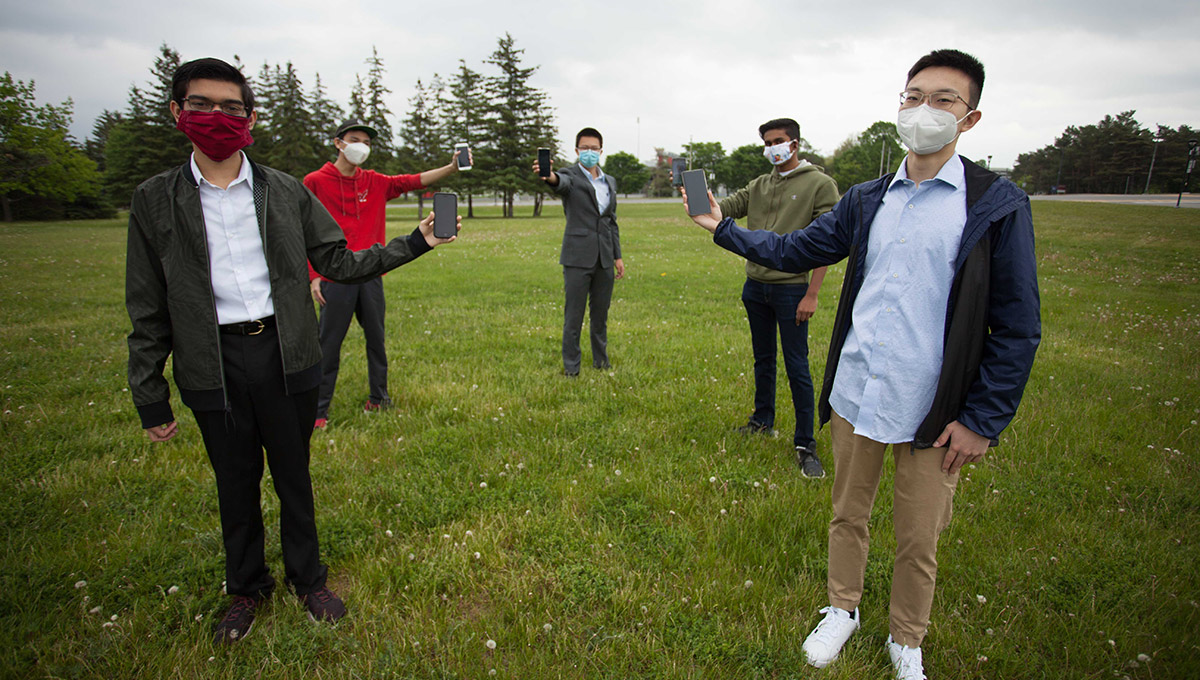
High School Students Give Feedback
In order to achieve widespread adoption, a contact tracing app must be simple to use, and function in crowded, real-world contexts. To ensure that her app does these things, Shi worked with students from local high schools.
“Young people are the ones who know technology. They are the ones who will be open to something like this first,” Shi says.
“They are also home from school because of the pandemic, and they need something to do.”
Shi reached out to friends who have children currently in high school and asked if they’d be interested in testing the new technology.
“I gave them a crash course in how the app works and its design. They told me what is good about it, and what needed to be improved.”
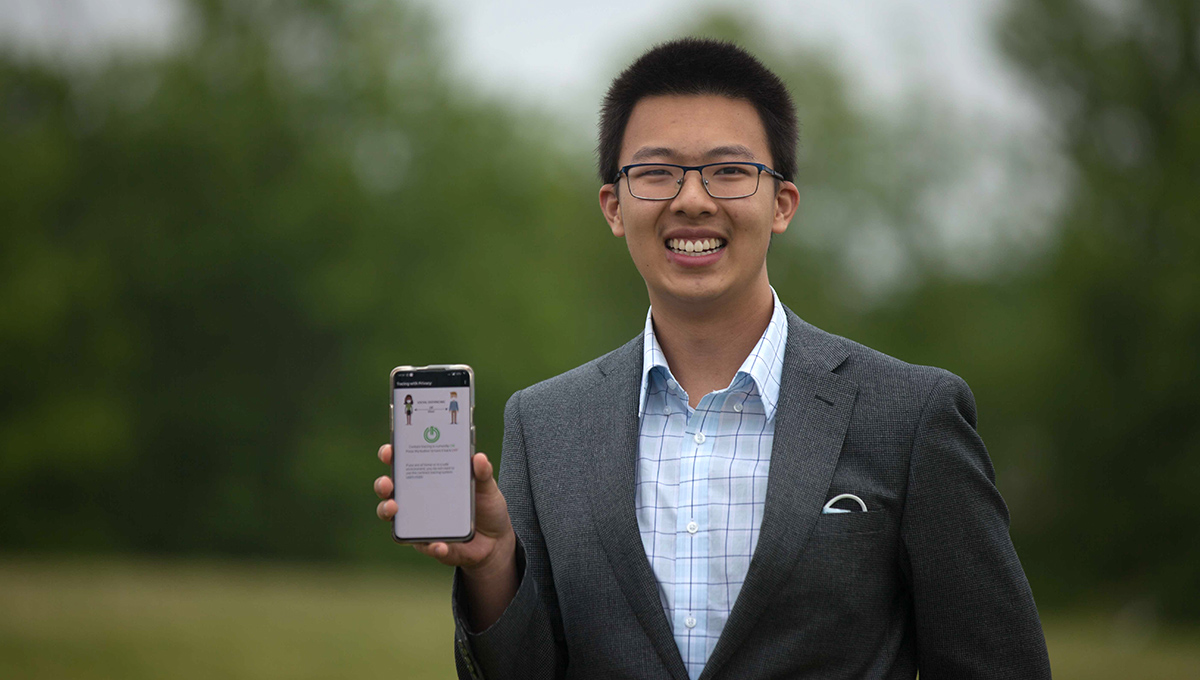
Fred Chen
The five students from St. Joseph High School and Longfields-Davidson Heights Secondary School installed a beta version of the application on their phones and began testing.
“It takes two or more phones to test the app, so I borrowed my sister’s and my dad’s phone, and installed the app on each phone,” says Fred Chen, a Grade 12 student at Longfields-Davidson.
“We’d flag one of the phones as being a user who has been infected by COVID-19, and move it within range of the other phones, to test whether the alerts would be sent. You need to create random scenarios for contact to test it in different situations.”
The students also made recommendations to simplify the user experience in the app.
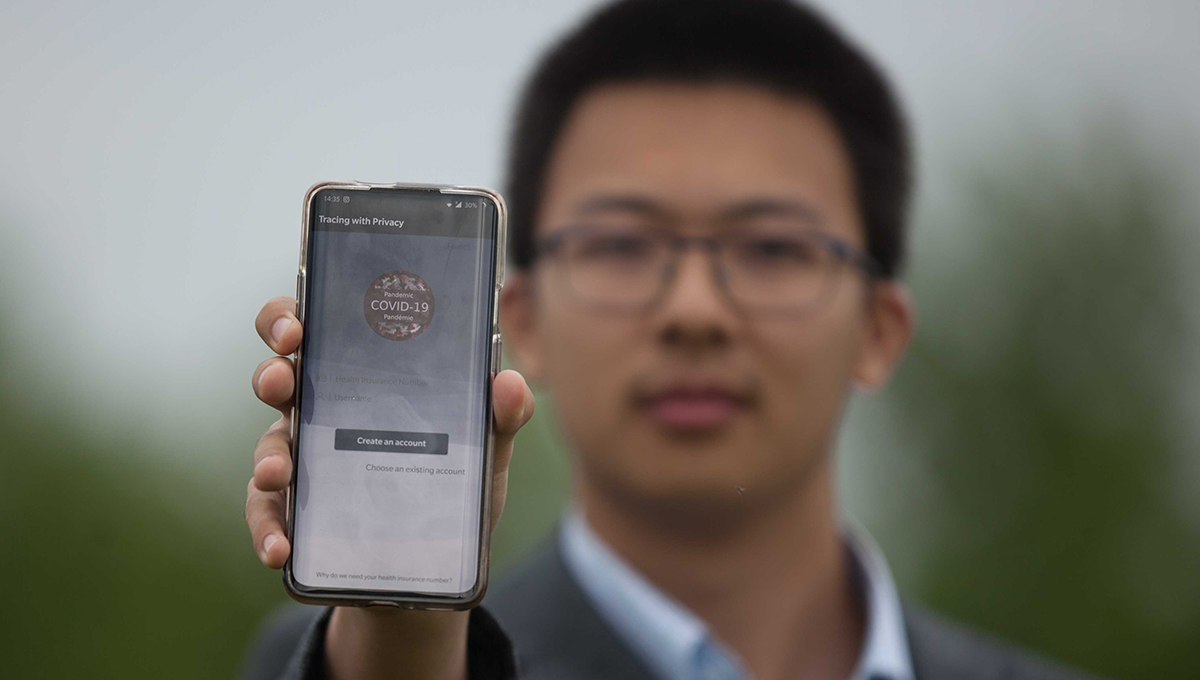
Chen shows off the new app
“We want to make it as simple as possible,” says Chen, who is planning to study computer engineering at the University of Toronto. “By minimizing the clutter on the interface, our app should be easy to learn by everyone.
“Originally, the user was prompted to create an ‘alias,’ but I wasn’t sure if people would understand what that meant. I suggested changing it to a ‘user name.’ I also suggested cutting down the amount of text, and having the app turn on automatically when the phone is turned on. It’s just little things that make it more intuitive.”
For Chen, it was an opportunity to work on an app with a real-world application – and to see how it actually works.
“We are all really interested in computer science, and she allowed us to see some of the back-end of the app” he says.
“To look at the code, and see what went into maintaining the user’s privacy. I’m really impressed with what professor Shi’s team has been able to do.”
